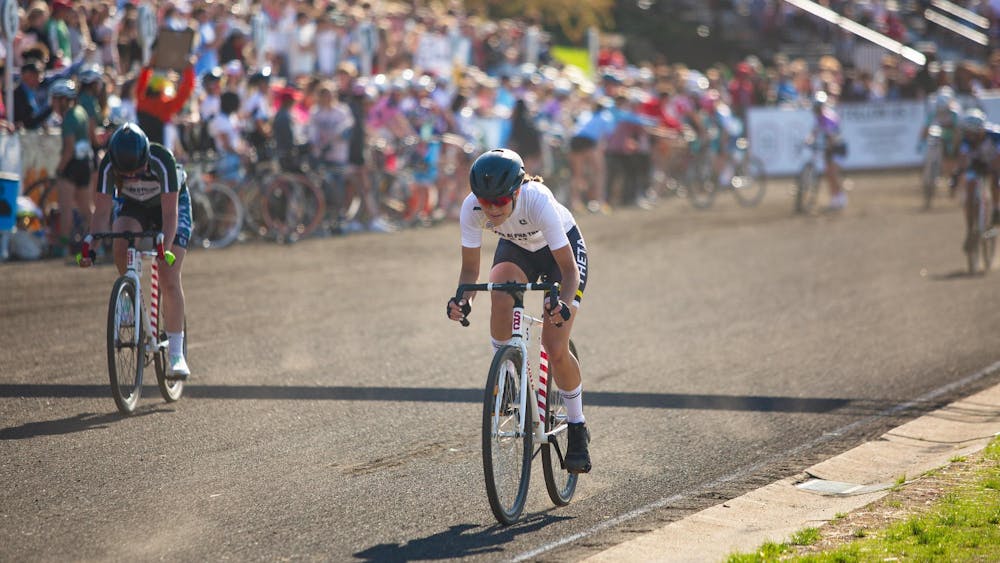The American History department is collaborating with the Inside-Out Prison Exchange Program to offer “The Postwar Prison: Histories of Containment” from 7 a.m. to 1 p.m. every Friday during the spring semester at the Heritage Trail Correctional Facility in Plainfield, Indiana.
During the semester-long course, 15 to 18 undergraduates, or “outside students,” and 15 to 18 incarcerated people, “inside students,” will attend class together as peers to learn about crime, justice, freedom, inequality and other issues of social concern, according to the program’s website.
“I’ve taught several different kinds of courses about prisons over my 15 years as a professor, but I like teaching Inside-Out the best,” said Micol Seigel, a professor in the American Studies department.
Seigel said students interested in signing up for the course must contact her via email to set up an interview.
“Students come together across the vast social divide that incarceration indexes and inflicts, to meet each other in the shared space of the classroom,” Seigel said. “We sit in a big circle in a classroom at the prison discussing questions derived from our reading or personal experience and collaborate on group projects at the end.”
Emilie Riggs, an English major who graduated from IU in May, took the course during the spring 2015 semester.
“Inside-Out brings two groups, IU students and inside students, into a safe, intellectual environment in order to study the history of the American incarceration system,” Riggs said. “Together, they meld into one unified group that analyzes and challenges the political and social factors that created the largest penal system in the world.”
Ash Kramer, a student at the Maurer School of Law and former Inside-Out student, said the immersive nature of the course provides students with a deeper understanding and connection to the topics discussed.
“Instead of just learning from a classroom wholly removed from the world, Inside-Out forces you into the very setting you learn about and makes your experience so much more valuable,” Kramer said. “This particular class gives you exercises in radical empathy as a way to intertwine what it is that you’re learning and why it’s important and what its effects are and have been.”
Seigel said classes about incarceration are important because prisons are such a major part of U.S. social policy and because prisons shape more aspects of U.S. society than people likely realize.
“All of us are affected by the kinds of assumptions and relations prisons anchor, whether we have ever been incarcerated ourselves, have family members inside, or not,” Seigel said.
Seigel said the issue does not receive the kind of focused, sustained attention such an issue requires.
By bringing together the different perspectives of inside and outside students, the Inside-Out program is designed to encourage students to reconsider their preconceived notions about crime, justice and their fellow classmates.
“The encounters between inside and outside students are even more important,” Seigel said. “People teach each other in this course, showing parts of themselves they never expected to reveal, or perhaps never even expected to see.”
By working alongside inside students throughout the course of the semester participants are better able to understand the large-scale and interpersonal significance of the topic, Kramer said.
“You get to feel the powerful importance of the effects of the historical context that lead to mass incarceration,” Kramer said. “And if you don’t already know, you get to learn how inside students are much more like outside students and the outside world than stereotypical images of media-depicted ‘criminals’ are.“
Students interested in signing up for the course must understand the Inside-Out program is focused on teaching participants about the incarceration system, not the incarcerated people, Seigel said.
“The course is not intended as an opportunity for IU students to study incarcerated people, nor help them,” Seigel said. “The inside students are equal members of the classroom, not guinea pigs or charity objects.”
Seigel said the course is suited for all those who are opposed to injustice, regardless of major or course of study.
“This course will change your life,” Seigel said. “I can’t explain, just believe me.”





